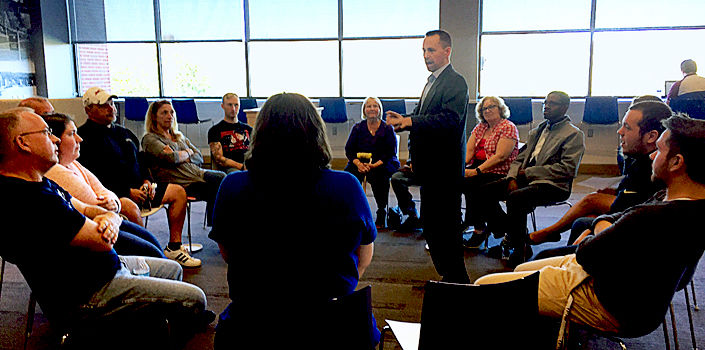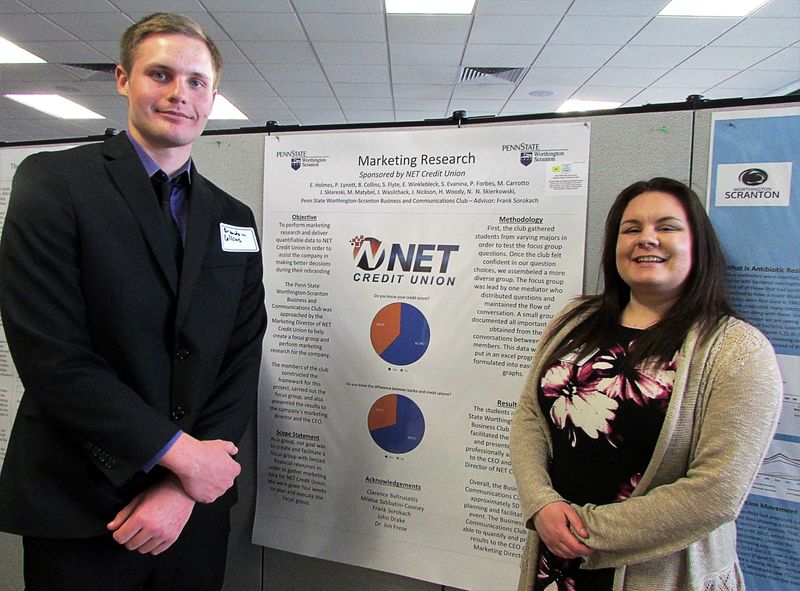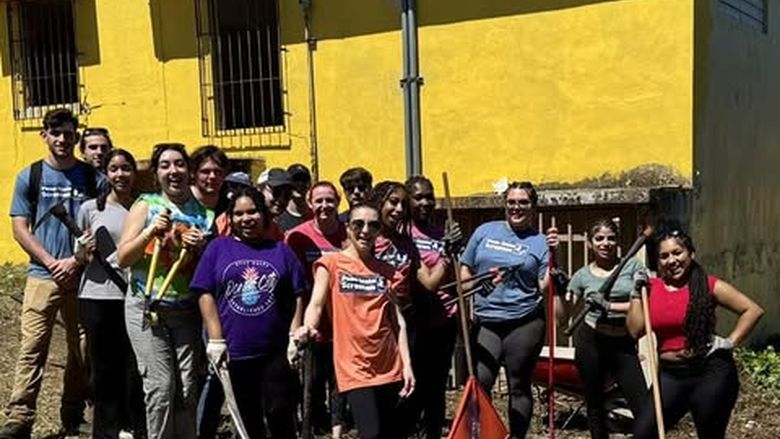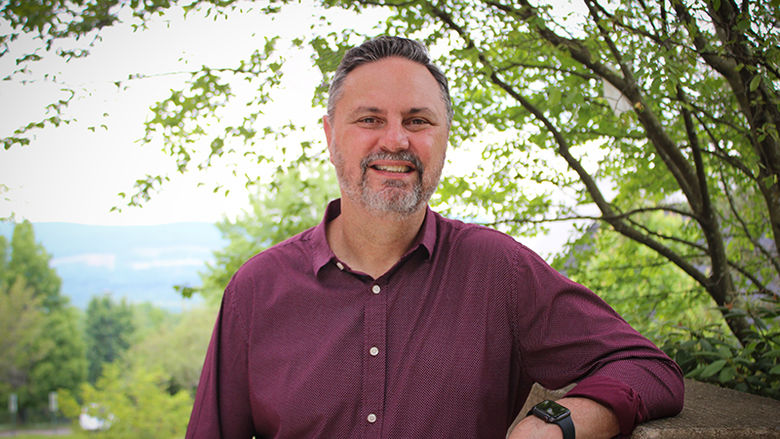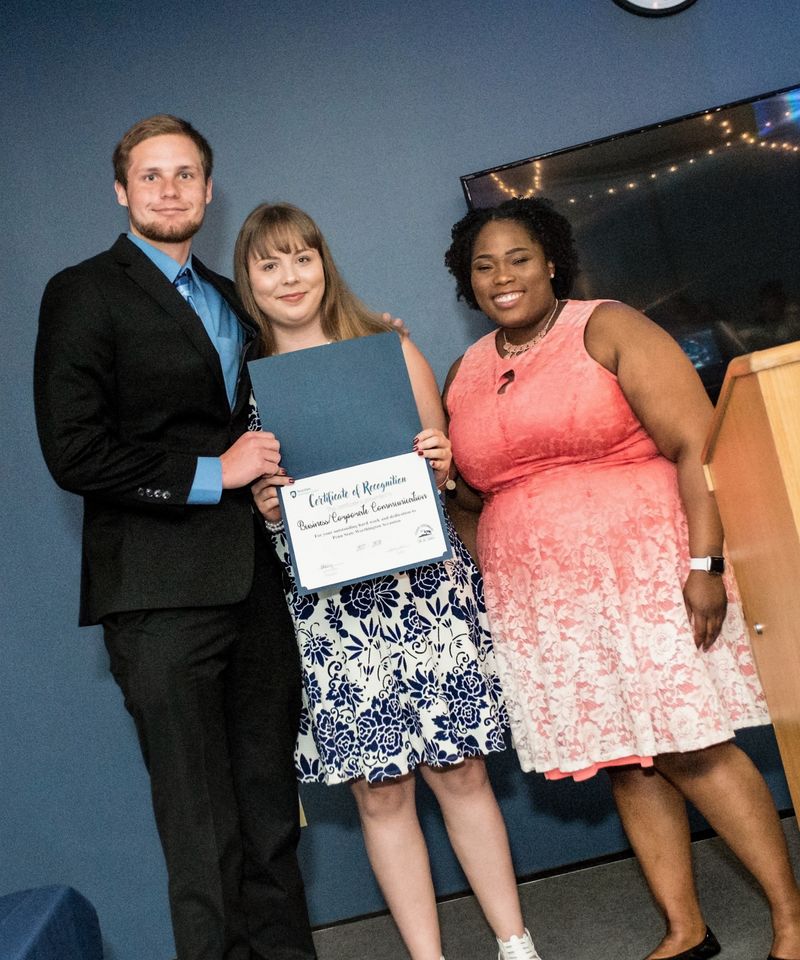
Business and Corporate Communications Club President Brandon Collins accepts a Certificate of Recognition on behalf of the club at this year's Student Recognition Dinner. Club members were recognized for the work they did working with NET Credit Union on a marketing/focus group research project over the fall and spring semesters. At right are Student Government vice president Liz Brandt and outgoing president Ashli Daley.
Credit: Penn State
